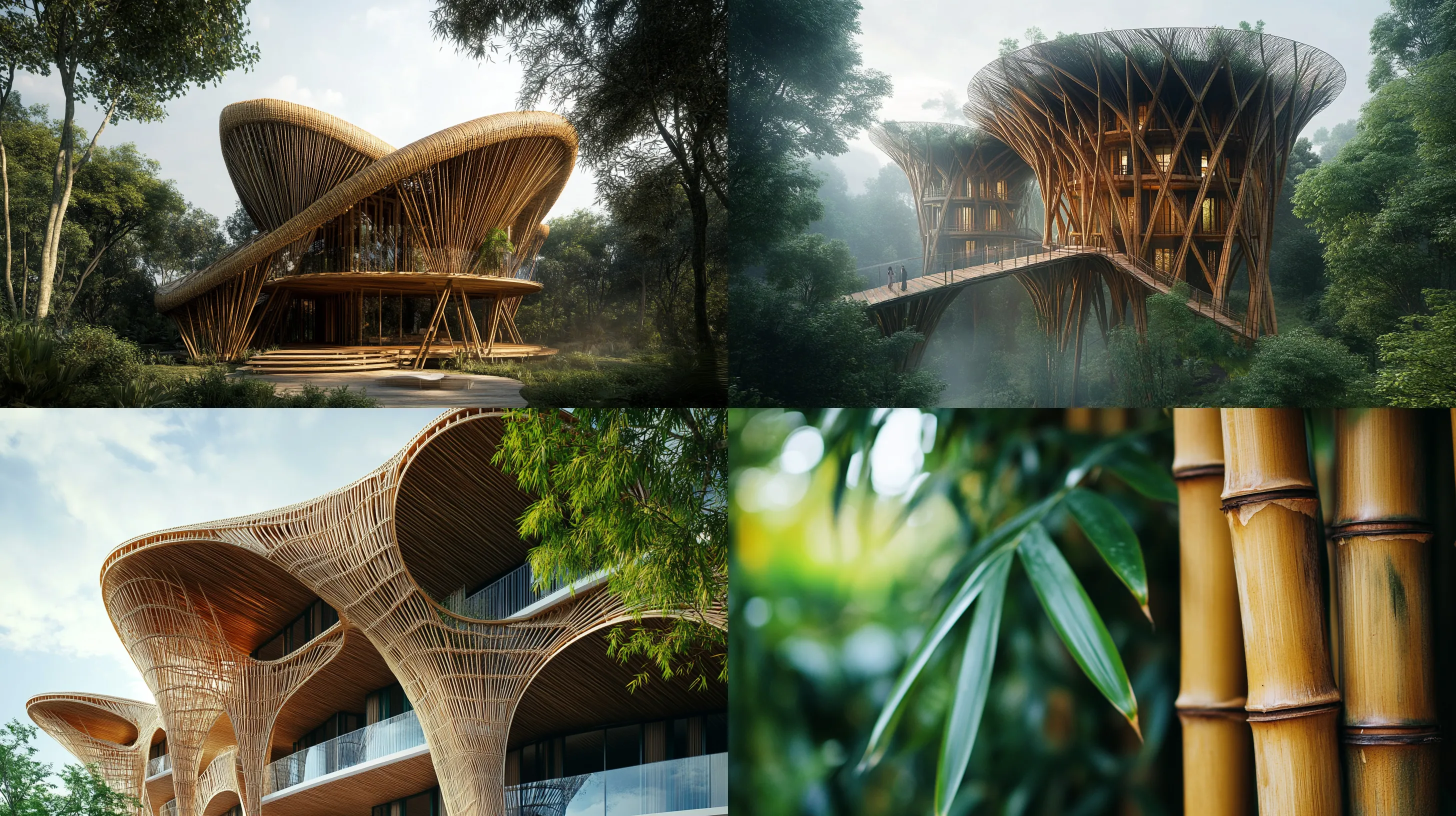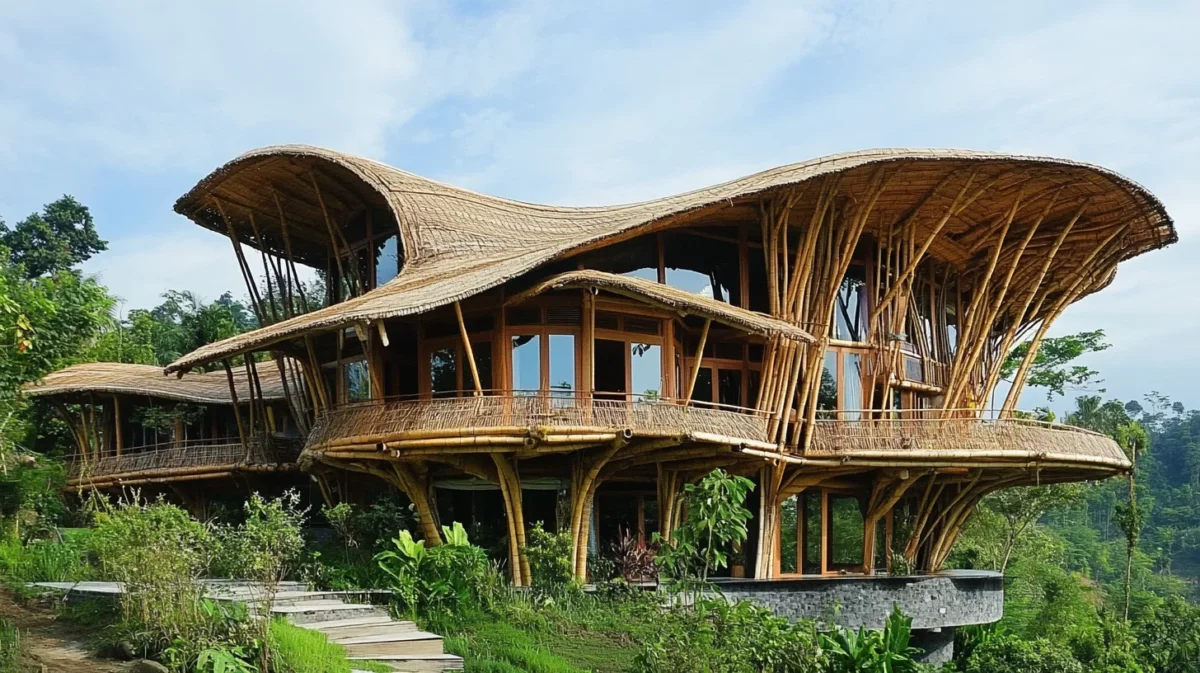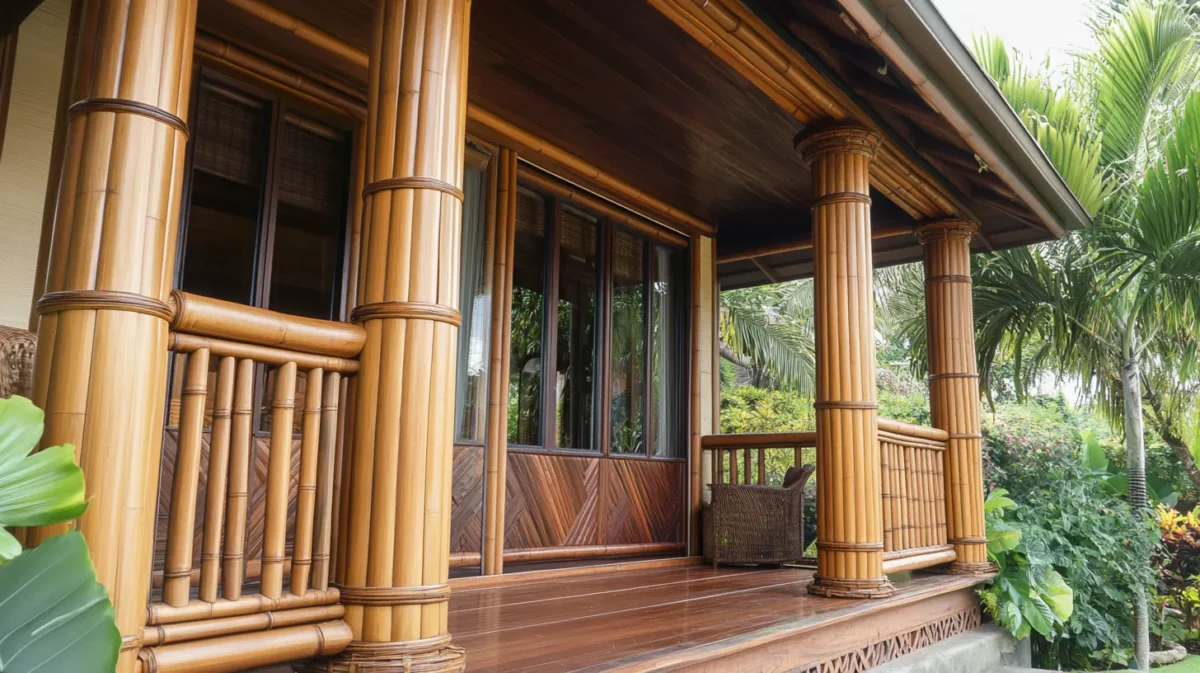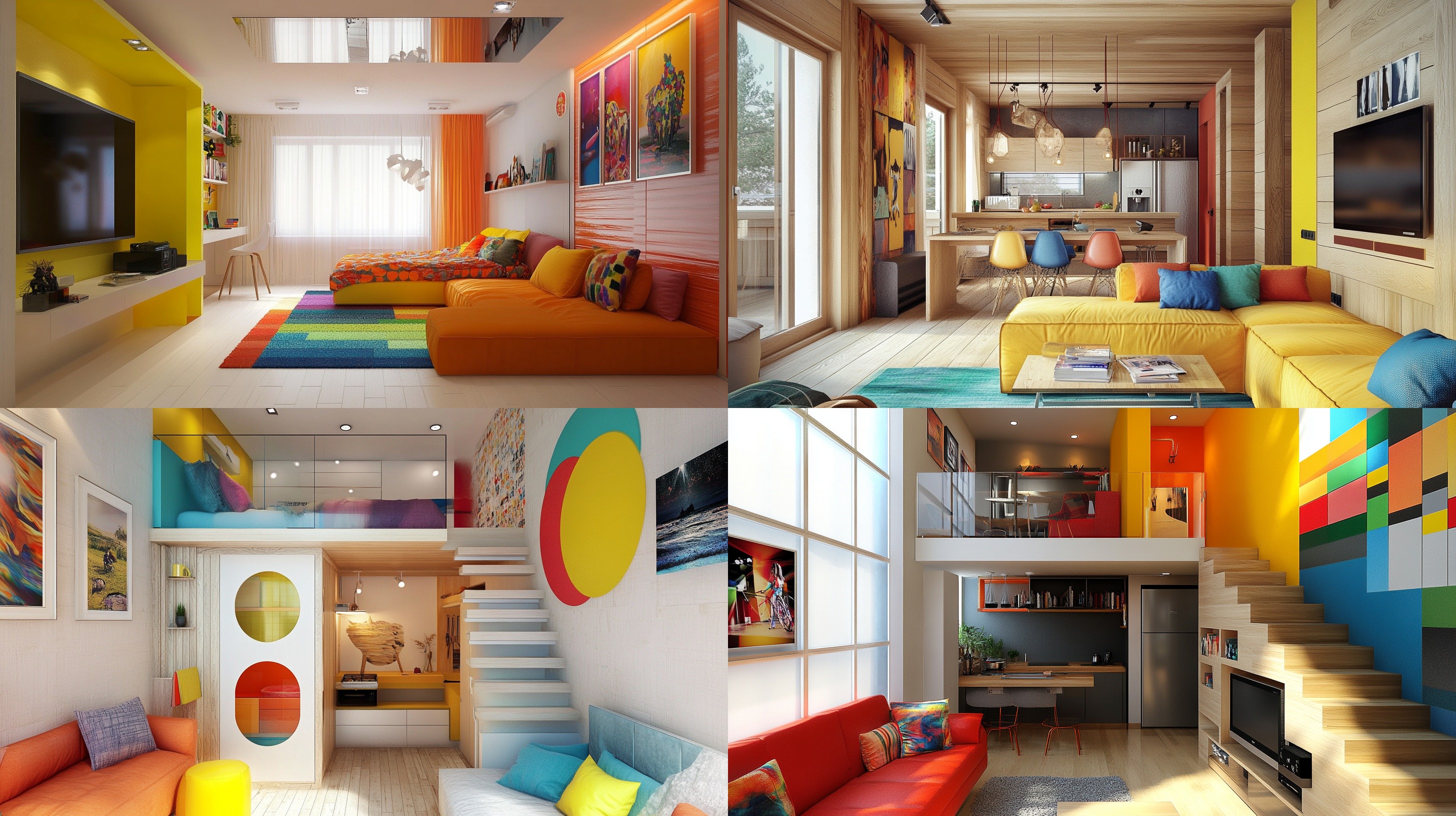Table of Contents
Quality Service Guarantee Or Painting Free

Get a rental agreement with doorstep delivery

Find the BEST deals and get unbelievable DISCOUNTS directly from builders!

5-Star rated painters, premium paints and services at the BEST PRICES!
Loved what you read? Share it with others!


Submit the Form to Unlock the Best Deals Today
Help us assist you better
Check Your Eligibility Instantly

Experience The NoBrokerHood Difference!
Set up a demo for the entire community
The Benefits and Challenges of Using Bamboo as a Building Material
Table of Contents
Bamboo is becoming a popular alternative to traditional building materials, and for good reason. It's sustainable, durable, and aesthetically pleasing, making it a top choice for eco-conscious homeowners and architects alike.
In this blog, we'll explore the benefits of using bamboo in construction and how it can enhance both the functionality and design of your home. We will also talk about the advantages and disadvantages of bamboo when it is used as a construction material.
From its strength and versatility to its impact on the environment, you'll discover why bamboo is a material worth considering for your next building project.
Quality Service Guarantee Or Painting Free

Get a rental agreement with doorstep delivery

Find the BEST deals and get unbelievable DISCOUNTS directly from builders!

5-Star rated painters, premium paints and services at the BEST PRICES!
Bamboo and Its Origins as a Construction Material
Bamboo is a fast-growing grass that is native to many parts of the world, including Asia, South America, and Africa. It has been used for thousands of years for various purposes, including construction, food, and medicinal purposes.
Bamboo is known for its strength, durability, and versatility, which has made it a popular building material in many cultures.
Bamboo as a Construction Material: Understanding its Physical Properties
These strengths of Bamboo make it a versatile and reliable option for construction projects of all sizes–
1. Strength
Bamboo is renowned for its strength and sturdiness, with a tensile strength that rivals that of steel. This makes it a suitable material for building bridges and other structures that require support and stability.
Bamboo poles can be used as columns and beams in the construction of houses and other buildings, providing a strong and stable structure.
2. Durability
Bamboo is naturally resistant to water damage, decay, and other weather-related wear and tear. This means that it can withstand the elements and remain strong and sturdy for many years, even with minimal maintenance.
Bamboo is ideal for outdoor decking, fences, and other exterior applications where it will be exposed to the elements. Its natural resistance to water and weather damage makes it a low-maintenance option for these types of projects.
3. Flexibility
Despite its strength, bamboo is also flexible, which makes it an ideal material for construction projects that require a certain amount of give and take. This property also helps bamboo to bend and sway without breaking during strong winds or earthquakes.
Bamboo is an excellent choice for the construction of arches, curved roofs, and other architectural features that require a certain degree of flexibility. Its flexibility allows it to bend and curve without breaking, making it a versatile material for these types of projects.
Advantages of using Bamboo Material for Construction
Here’s why using Bamboo as a construction material is a good idea.–
1. Bamboo is a Sustainable and eco-friendly Building Material
Bamboo is a highly sustainable and eco-friendly building material that has significant environmental benefits when compared to traditional materials like steel.
For example, the production of steel generates a significant amount of greenhouse gases, contributing to global warming and climate change. In contrast, bamboo is a rapidly renewable resource that has a much lower carbon footprint.
Bamboo is also biodegradable, breaking down naturally over time without leaving any harmful impact on the environment. When compared to steel, bamboo has a significantly lower environmental impact, making it an excellent choice for those who are looking to build in an environmentally conscious way.
2. Bamboo is an Affordable and Accessible Building Material
Bamboo is not only an eco-friendly building material but also an affordable alternative to traditional materials such as concrete and steel.
The cost of building with bamboo can be significantly lower compared to using traditional materials. On average, bamboo construction can be 20-30% cheaper than traditional building methods, making it an accessible option for those on a budget.
For example, bamboo flooring can cost approximately ₹100-₹150 per sq ft, while traditional hardwood flooring can cost upwards of ₹300 per sq ft. Similarly, a bamboo staircase can cost ₹3000-₹5000, while a traditional concrete or steel staircase can cost ₹8000 or more.
The affordability of bamboo makes it an attractive option for those looking to build a sustainable and beautiful home without breaking the bank.
3. Bamboo is Versatile and Adaptable to Various Building Designs
From homes and apartments to commercial buildings and public spaces, bamboo can be used in nearly any construction project with the right techniques and design elements.
Bamboo designs can be used to create a wide range of styles, from traditional Asian-inspired homes to modern, minimalist structures.
Bamboo can be worked into a variety of textures and shapes, making it a versatile material for building walls, roofing and flooring. Modern Bamboo furniture is becoming a popular choice for different interior decor styles such as Bohemian Interior Decor style.
This versatility and adaptability make bamboo a great choice for those who want to build a beautiful, sustainable home or building without sacrificing style or functionality.
Bamboo's ability to be used in such a wide range of construction projects and building designs makes it a truly versatile material with limitless possibilities.
Disadvantages of Using Bamboo for Construction
Deterioration: While bamboo is known for its strength and flexibility, it can deteriorate over time if not properly treated and maintained. Bamboo is also susceptible to termite and pest attacks, which can weaken its structure.
Climate sensitivity: Bamboo is a tropical plant and may not be suitable for use in areas with extremely cold or hot temperatures. It may become brittle and crack in cold climates, or become warped and twisted in hot climates.
Cost: Bamboo can be more expensive than traditional building materials, such as concrete and steel, due to the specialized techniques and materials required to build with it.
Here’s a quick glance of the Advantages and disadvantages of using Bamboo for construction.
| Advantages of Bamboo Construction | Disadvantages of Bamboo Construction |
| Sustainable and eco-friendly | Availability and cost may vary in certain regions |
| Affordable compared to traditional building materials | Can be prone to pest attacks |
| High strength-to-weight ratio | May not be as fire resistant as other building materials |
| Versatile and adaptable to various building designs | Can be subject to dimensional changes due to moisture |
| Aesthetically pleasing | May not have standardization in quality and size |
| Efficient use of resources | Can be difficult to find skilled labor to work with bamboo |
| Lightweight and easy to transport | May require special storage and handling to prevent damage |
| Biodegradable and low carbon footprint | May not have local codes and regulations for use as a building material |
A Cost Estimate of Bamboo Construction
To help you get a better understanding of the cost of bamboo construction in India, we've compiled a list of common bamboo structures for a home and the estimated cost range for each.
| Structure | Cost Range (in ₹) |
| Bamboo Walls | 20,000 to 50,000 |
| Bamboo Roofing | 30,000 to 60,000 |
| Bamboo Flooring | 15,000 to 35,000 |
| Bamboo Pillars | 10,000 to 30,000 |
| Bamboo Staircase | 30,000 to 50,000 |
Low-Cost Simple Bamboo House Design
A low-cost simple bamboo house design typically consists of a single room or a small cluster of rooms, with a thatched roof made of bamboo mats or tiles.
The walls are usually made of bamboo poles or split bamboo, and the flooring is either dirt or a simple bamboo mat. The house is usually built on a raised platform, with the bamboo foundation anchored in the ground.
The cost of such a design can be as little as ₹50,000 to ₹1,00,000, depending on the materials used and the size of the structure. The cost of labour will also vary depending on the local labour market and the level of expertise of the workers.
Despite its low cost, a simple bamboo house can still be a comfortable and functional living space, providing protection from the elements and a place to sleep, cook, and relax.
Chances are that you don’t want to build your entire home out of bamboo. In that case, you can opt for just Bamboo walls or maybe bamboo flooring.
The Art of Bamboo Construction Technique: 7 Places Where You Can Use Bamboo
Bamboo has long been used as a building material in many parts of the world, and for a good reason. It is sustainable, affordable, and versatile, making it a great choice for those looking to build a beautiful, environmentally-conscious home or building.
This section will take a closer look at some of the most common bamboo construction techniques and applications.
1. Bamboo Roofing

Bamboo can be used to create beautiful and durable roofing for homes and buildings. Whether you are looking for a traditional thatched roof or a modern, architectural design, bamboo can be crafted into a variety of shapes and sizes to meet your needs.
One of the most popular bamboo construction techniques is bamboo roofing, where bamboo poles are woven together to create a sturdy and aesthetically pleasing roof structure.
2. Bamboo Pillars

Pillars made of Bamboo are strong, durable, and aesthetically pleasing, making them a great choice for those looking to build a beautiful and functional home. Bamboo pillars can be used to support roofing, balconies, and even entire buildings.
3. Bamboo Foundation

Bamboo is a strong and flexible material, making it a great choice for foundation details. Whether you are looking to build a traditional bamboo hut or a modern home, bamboo can be used to create a strong and stable foundation that will last for years to come.
When it comes to bamboo foundation details, it's important to choose the right bamboo species, treat it properly to increase its durability and longevity, and use the right construction techniques to ensure a secure and stable foundation.
4. Bamboo Wall Panels

For those wishing to construct a sustainable and environmentally friendly home, bamboo wall panels are a great option. In order to satisfy your design needs, bamboo wall panels are versatile, strong, and simple to install.
5. Bamboo Flooring

Bamboo is a beautiful and sustainable alternative to traditional flooring materials such as hardwood or tile. Bamboo flooring is durable, easy to install, and comes in various colours and textures to meet your design needs.
6. Bamboo Staircases

Bamboo stairs are a stunning and environmentally friendly replacement for conventional staircases constructed of wood or metal. Staircases made of bamboo are sturdy, long-lasting, and available in a range of designs and sizes to meet your requirements.
7. Bamboo Decorative Elements

Bamboo can also be used to create beautiful and functional decorative elements for your home or building. From bamboo furniture to bamboo accents, there are countless ways to incorporate bamboo into your design scheme to create a truly unique and sustainable living space.
Whether you are building a new home or renovating an existing space, the above-mentioned bamboo construction techniques and applications can help you create a beautiful and sustainable living environment that will last for years to come.
Challenges of Using Bamboo as Building Material
Keep these things in mind if you’ve made up your mind about using Bamboo for building parts of your home.
- Procurement: Difficulty in sourcing sustainable bamboo in large quantities and ensuring quality control.
- Climate: Susceptibility of bamboo to decay and insect infestation in humid Indian conditions.
- Transportation: Costly and potentially damaging transportation of bamboo over long distances.
- Expertise: Lack of awareness and expertise among architects, engineers, and builders regarding bamboo as a construction material.
How Can NoBroker Help?
Bamboo is an environmentally friendly option that is durable and cost-effective.
For those looking to incorporate bamboo into their home décor, there may be challenges in finding the right products, suppliers and experts who are familiar with the material.
With our extensive network of professional builders and suppliers, NoBroker can connect you with the right experts to help you bring your bamboo décor visions to life. Our team of experts can guide you through the process and provide you with the knowledge and resources you need to create a beautiful and sustainable home.
So why wait? Get in touch with us today and start exploring the world of bamboo décor for your home. Let NoBroker help you bring your home to life!

FAQ's
Ans: Bamboo construction is known for its durability, strength, and flexibility. It is lightweight, yet can withstand heavy loads. Bamboo has high tensile strength, making it suitable for use as beams and columns in construction. It is also a renewable resource and is known for its quick growth, making it an environmentally friendly building material.
Ans: The life span of bamboo in construction can vary depending on the quality of the bamboo, the environment in which it is used, and the type of construction. On average, bamboo can last for up to 20-50 years in construction. With proper treatment and maintenance, bamboo structures can last even longer.
Ans: Bamboo is a relatively new building material and is not as commonly used as steel in construction. Steel is known for its strength and durability, and is a popular construction material. However, bamboo has some advantages over steel, including being a renewable resource and being lighter in weight. Bamboo also has good insulation properties and is more environmentally friendly.
Ans: The disadvantages of using bamboo for construction include the fact that it is not as commonly used as other building materials, such as steel. Bamboo can also be difficult to work with, as it is prone to splitting and cracking. In addition, bamboo structures require more maintenance and may need to be treated and sealed regularly to protect against damage.
Ans: A villa made of bamboo costs between INR 35 lakhs to INR 1 crore or more. To get an accurate estimate of the cost, it's advisable to seek a quote from a reputed builder.
Ans: Bamboo has a high tensile strength similar to steel and a compressive strength twice that of concrete. Also, bamboo fibres exhibit higher shear stress compared to wood.
Recommended Reading

How to Make a Room Soundproof: 15 Ideas That Work Like a Charm
December 17, 2024
18131+ views

Best 30 Iron Window Grill Design Ideas: Modern, Contemporary and Different Patterns in 2025
December 17, 2024
9296+ views

13 Best Creative 1000 Sq Ft House Design Ideas for Modern Living in 2024
September 30, 2024
992+ views

25+ Front Elevation Designs for Small Houses in 2024
September 17, 2024
2509+ views

10+ Best 1500 Square Feet House Design Ideas for Your Dream Home in 2024
September 10, 2024
1146+ views
Loved what you read? Share it with others!
NoBroker Interiors Design Testimonials
Most Viewed Articles

Top Hanging Light Ideas to Illuminate Your House
March 29, 2024
392635+ views

GFRG Panels - A New Technology in Building Construction
August 24, 2023
256344+ views

15 Wall-Mounted Dining Table Design Ideas
January 25, 2024
102969+ views

How Mivan Construction Technology Is Transforming the Art of Building!
December 17, 2024
45160+ views

Best 3 Bedroom House Plan: Modern and Space-Efficient Layouts for 2025
December 17, 2024
25467+ views
Recent blogs in
15+ Stunning Front Gate Designs for Your Home in 2025
December 19, 2024 by Ananth
18 Popular Bedroom POP Ceiling Design Ideas In 2025
December 19, 2024 by Prakhar Sushant
Wooden Partition Walls for Living Room 2025
December 19, 2024 by Ananth
The Ultimate Guide to the Best Wood for Furniture Selection in 2025
December 17, 2024 by Manu Mausam
How to Make a Room Soundproof: 15 Ideas That Work Like a Charm
December 17, 2024 by Simon Ghosh



Join the conversation!